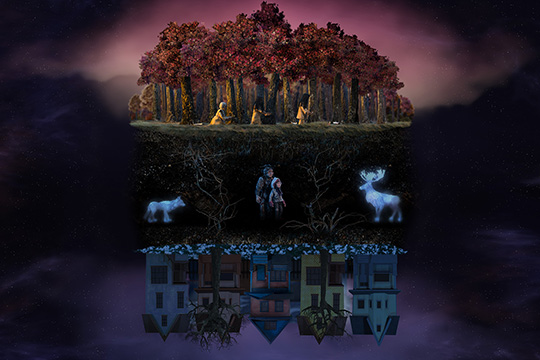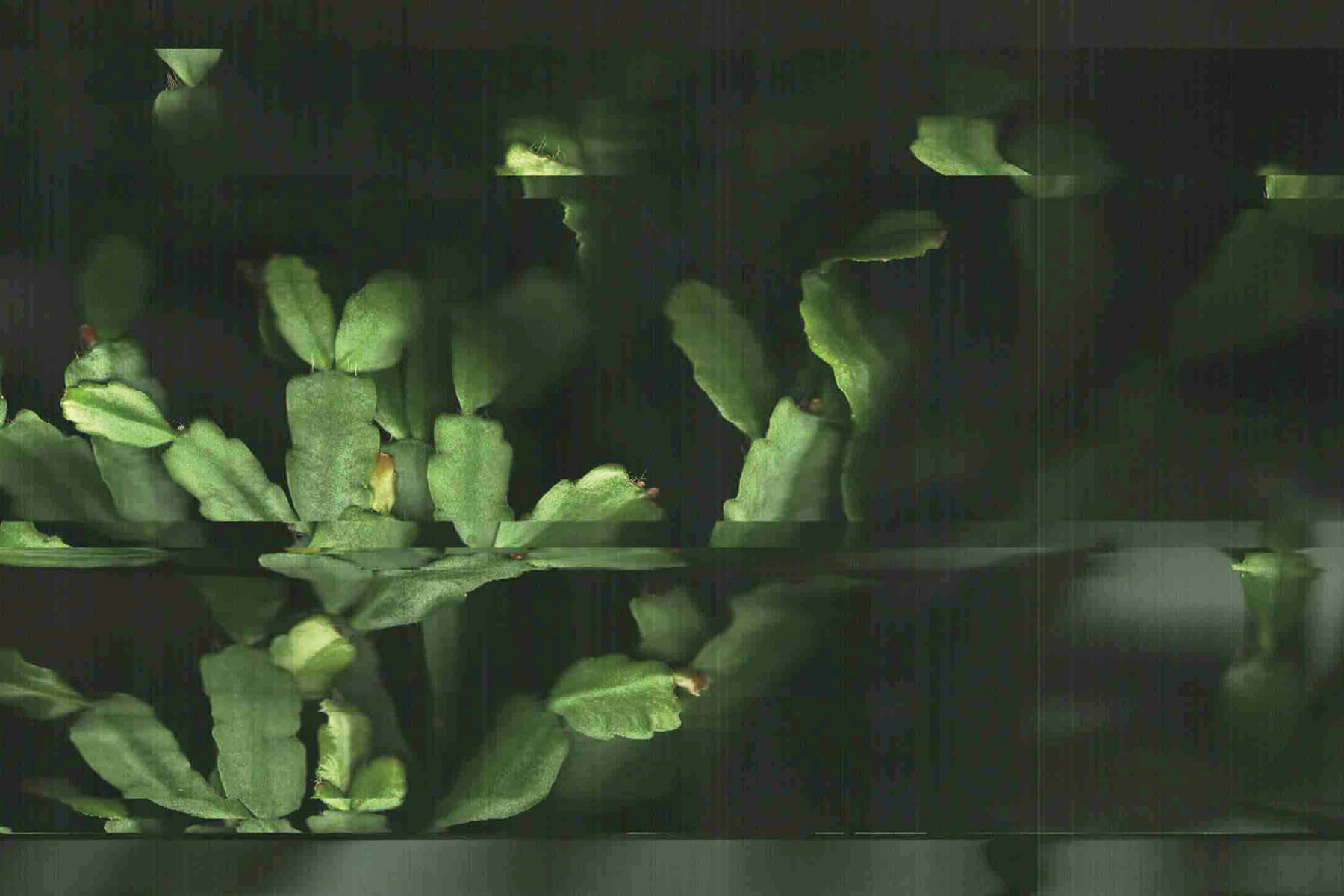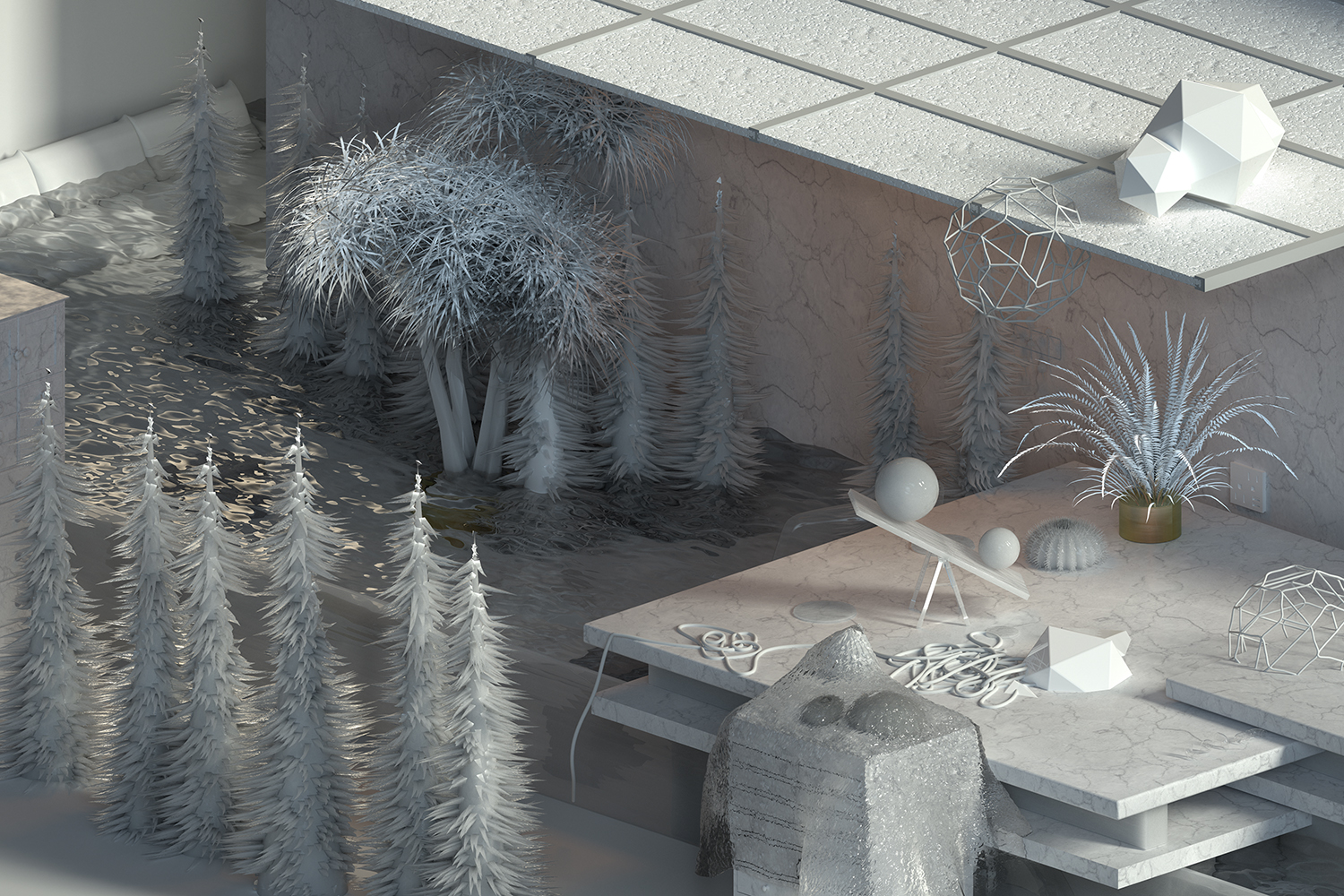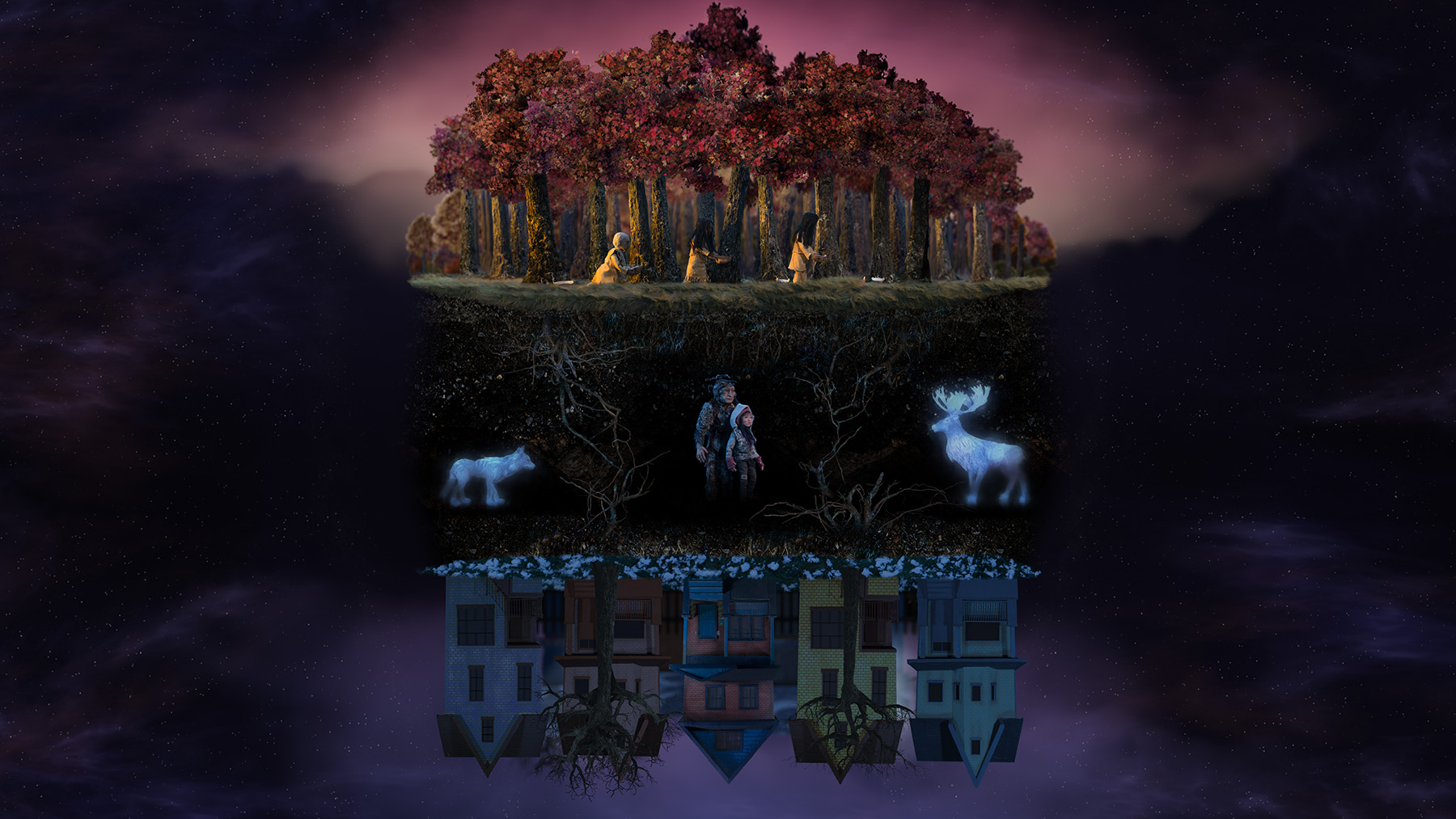
January 13-March 7, 2020
Curated by Alison Cooley

These lightboxes are commissioned for Other Life-formings, an exhibition running January 13– March 7, 2020 in the Blackwood Gallery and e|gallery. Exploring the liveliness of the non-human, Other Life-formings addresses how technologies for visualizing “coming-to-life” open space for the sentience and sign-making capacities of other-than-human beings, invite non-human languages, and unsettle anthropocentric logics.
Other Life-formings
January 13-March 7, 2020

Terrene is a body of work that consists of collaged images on fragments of hand-cut and tanned photosensitive film. The collaged images represent differing but related forms of worlding or world-making: industrial, exterior, “hard” spaces of construction captured on a smartphone, and internal, domestic, “soft” spaces of Kang’s grandmother’s garden, made with a lo-fi handheld scanning wand, intended for scanning documents on the go. Distinctions between “hard” and “soft” quickly fade and the oppositions aren’t so clear.
This lightbox image is excerpted from the series. Queering the handheld scanner by subverting its original purpose and mobilizing it as a technology of image production, Kang explores ways of touching, mediating, and engaging with the more-than-human worlds in her grandmother’s garden in the sunroom of her apartment in Seoul. The wand “reads” the living body of the plant as Kang passes it across the surface of the leaves—the movement of the artist’s hand both enables the creation of the image, and becomes etched in it. The wand stops producing an image when the object becomes illegible, but in the process generates distortions and glitches that trace the artist’s presence. Kang’s handheld scanner touches the plant and the plant touches back, producing distortions and abstractions.

Alex McLeod’s computer-generated animations and environments address notions of connectivity between the technological and organic, focusing specifically on perceived ideas of digital life cycles.
McLeod’s works build imagined virtual worlds; animations display micro-environments where anthropomorphized forms are granted the gift of motion, and 3D-rendered landscapes explore the interconnectivities, infinities, and indefinite editabilities built into the creation of digital spaces. In a lightbox and three video works playing on screens across the UTM campus, McLeod considers the implications of playing creator and questions how we engage with digital characters and environments on a daily basis online in games, marketing, and design.

For thousands of years, Indigenous people have harvested sap from trees to produce syrup, a practice that continues today. In Strong’s stop-motion animation (from which this image is drawn), two characters—Biidaaban, a young Indigenous gender-fluid person, and Sabe, a Sasquatch shape-shifter—set out to harvest sap from Sugar Maples in their urban environment and private neighbourhoods of the city. Biidaaban can see traces of time, people, creatures, and land. By harvesting syrup in this way, they are continuing the work of their ancestors.
Ancestors and animals such as Ghost Caribou and Ghost Wolf are embedded within the landscape but only Biidaaban can see them. These visuals reverberate throughout the work to draw from the past but what we see is steadfast in the present.
Driven by the words of Anishinaabe writer Leanne Betasamosake Simpson, Amanda Strong’s mesmerizing stop-motion animation intricately weaves together multiple worlds through time and space, calling for a rebellion.
One in a series of collages investigating visual resistance, Aggregate Icon (Concentric Y&B) focuses on camouflage and surveillance and how they are manifested in protest and biology. Exploring aposematism—a form of camouflage in which an animal’s colour and pattern (often yellow and black) function as a siren to warn off predators—this new work draws from and contributes to the artist’s ongoing project MAS-archive (begun in 2008) that catalogues the attire of masked protesters from around the world.
The chromatic and luminous contrast of yellow and black increases visibility and warns of a potential danger for both animals and humans alike. Wyman highlights how this optical strategy has been employed by countless individual protesters and collectives; including the “Yellow Shirts” (Southeast Asia), the Umbrella Revolution (Hong Kong), Black Lives Matter (internationally) and the “Yellow Vests” movement (France). This visual tactic offers the wearer protection as well as an entry point into the social imaginary of collective desires and wishes for change.
A full list of the protests pictured in the collage is available in the Other Life-fromings micropublication.
Laurie Kang is an artist living in Toronto. Her work has been exhibited at Interstate Projects and Topless, New York; The Power Plant Contemporary Art Gallery, Cooper Cole, 8-11, The Loon, Gallery TPW, Franz Kaka, and Carl Louie, Toronto; Remai Modern, Saskatoon; Galerie Antoine Ertaskiran and L’inconnue, Montreal; Raster Gallery, Warsaw; Wroclaw Contemporary Museum, Poland; and Camera Austria, Graz. She has been artist-in-residence at Rupert, Vilnius; Tag Team, Bergen; The Banff Centre for Arts & Creativity, Alberta; and Interstate Projects, Brooklyn. She holds an MFA from the Milton Avery School of the Arts at Bard College and is represented by Franz Kaka in Toronto.
Alex McLeod is a Toronto-based visual artist who creates work about interconnection, life’s cycles, and empathy through the computer as medium. Prints, animations, and sculptures function as gateways into alternative dimensions, oscillating between the real and the imagined. McLeod holds a BFA from the Ontario College of Art and Design, and a Master of Digital Media from the Yeates School of Graduate Studies at Ryerson University, Toronto. He has exhibited extensively at the provincial, national, and international levels. His work is held in private and public collections including the Whitney Museum of American Art and the Museum of Contemporary Art, Toronto.
Amanda Strong is an Indigenous (Michif) interdisciplinary artist with a focus on filmmaking, stop-motion animations, and media art. She is currently based on unceded Coast Salish territories also known as Vancouver, BC. Strong is the owner, director, and producer of Spotted Fawn Productions (SFP). Under her direction, SFP uses a multi-layered approach and unconventional methods, centered on collaboration in all aspects of their work. Strong received a BAA in Interpretative Illustration and a Diploma in Applied Photography from the Sheridan Institute. With a cross-disciplinary focus, common themes in her work are reclamation of Indigenous histories, lineage, language, and culture. Strong’s work is fiercely process-driven and takes form in various mediums such as: virtual reality, stop-motion, 2D/3D animation, gallery/museum installations, published books, and community-activated projects. Strong and her team at Spotted Fawn Productions are currently working on the research and development of bringing these works into more interactive spaces.
Jemima Wyman is an artist based in Los Angeles. Her most recent work focuses on patterns and masking used by marginalized groups to gain power. Wyman’s recent exhibitions were held at Sullivan+Strumpf, Australia (2019 & 2017); Commonwealth and Council, USA (2018 & 2015); HeK (House of Electronic Arts Basel), Austria (2019); Museum of Australian Democracy (2019); Wellington City Gallery, New Zealand (2018); and ZKM, Germany (2018). Wyman’s artwork has been included in the Sydney (2010), Liverpool (2012) and Gwangju (2018) Biennials. Her work has been reviewed in The New York Times, Los Angeles Times, Frieze, Artforum, Camera Obscura, LA Weekly, Eyeline, Art Collector, and Artlink.
The Blackwood Gallery gratefully acknowledges the operating support of the Canada Council for the Arts, the Ontario Arts Council, and the University of Toronto Mississauga. This project is generously supported through the UTM50 Anniversary Fund, established to showcase the innovative, collaborative spirit of UTM, and by the Canada Council for the arts.
